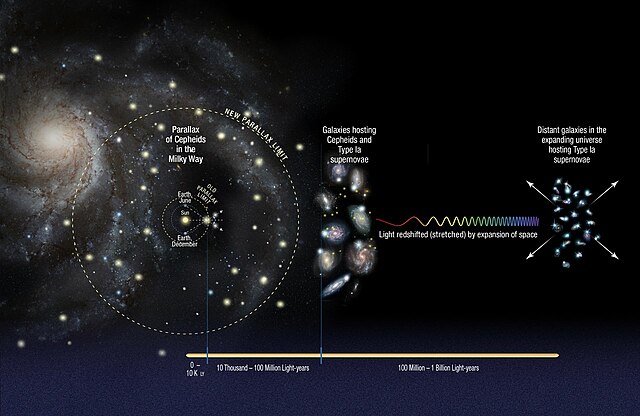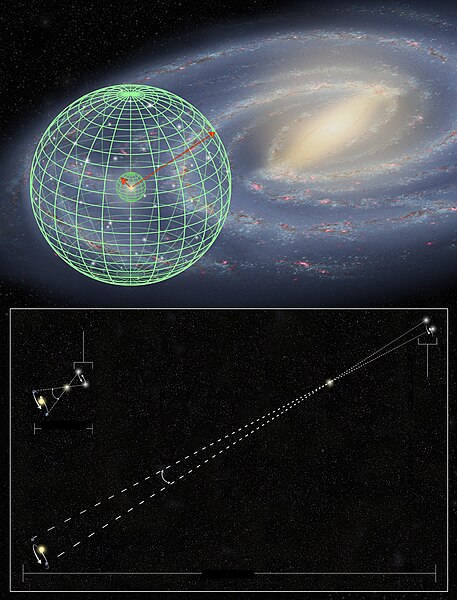The cosmic distance ladder is the succession of methods by which astronomers determine the distances to celestial objects. A direct distance measurement of an astronomical object is possible only for those objects that are "close enough" to Earth. The techniques for determining distances to more distant objects are all based on various measured correlations between methods that work at close distances and methods that work at larger distances. Several methods rely on a standard candle, which is an astronomical object that has a known luminosity.
The sculpture The Astronomer shows the use of parallax to measure distance. It is made from parts of the Yale–Columbia Refractor telescope (1924) damaged when the 2003 Canberra bushfires burned out the Mount Stromlo Observatory; at Questacon, Canberra.
Parallax measurements may be an important clue to understanding three of the universe's most elusive components: dark matter, dark energy and neutrinos.
Hubble Space Telescope precision stellar distance measurement has been extended 10 times further into the Milky Way.
SN 1994D (bright spot on the lower left) in the NGC 4526 galaxy. Image by NASA, ESA, The Hubble Key Project Team, and The High-Z Supernova Search Team
The parsec is a unit of length used to measure the large distances to astronomical objects outside the Solar System, approximately equal to 3.26 light-years or 206,265 astronomical units (AU), i.e. 30.9 trillion kilometres. The parsec unit is obtained by the use of parallax and trigonometry, and is defined as the distance at which 1 AU subtends an angle of one arcsecond. The nearest star, Proxima Centauri, is about 1.3 parsecs from the Sun: from that distance, the gap between the Earth and the Sun spans slightly less than 1/3600 of one degree of view. Most stars visible to the naked eye are within a few hundred parsecs of the Sun, with the most distant at a few thousand parsecs, and the Andromeda Galaxy at over 700,000 parsecs.
As observed by the Hubble Space Telescope, the astrophysical jet erupting from the active galactic nucleus of M87 subtends 20″ and is thought to be 1.5 kiloparsecs (4,892 ly) long (the jet is somewhat foreshortened from Earth's perspective).





